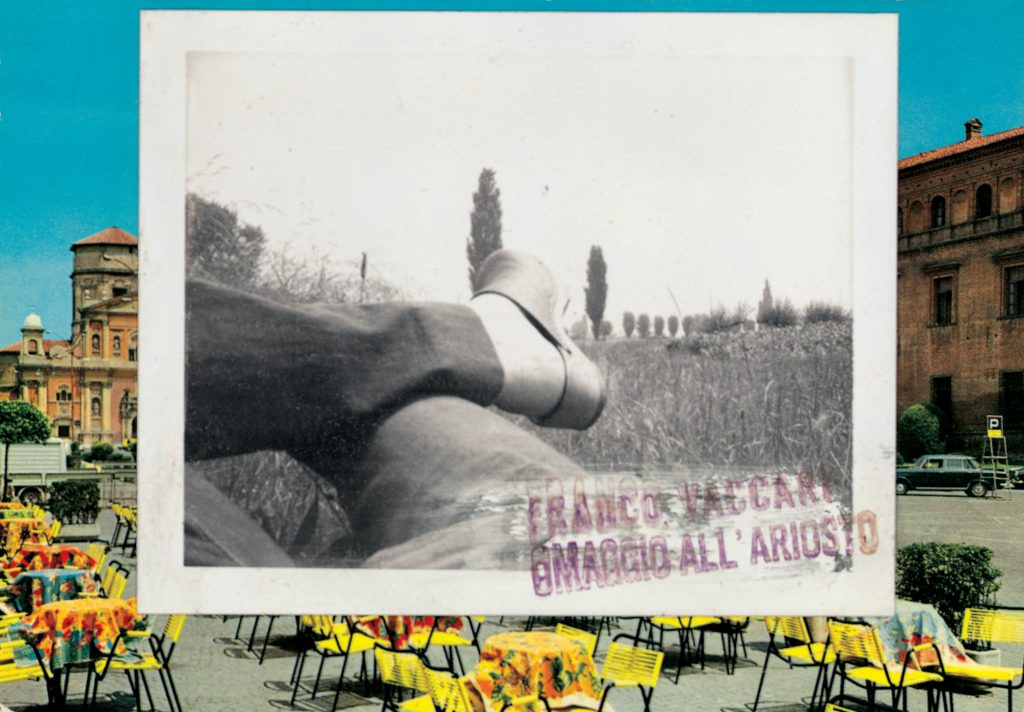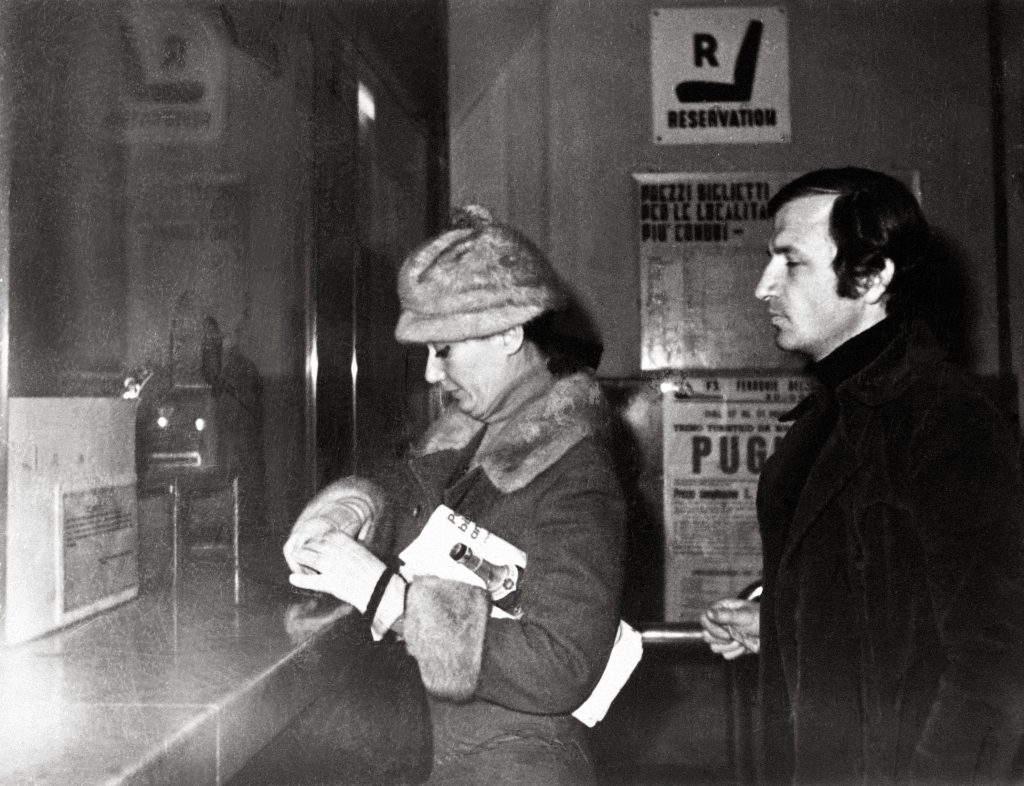by Beatrice Bruni
_
Since the beginning, in the Sixties, in the fervent cultural climate of the Neoavanguardia (“New Vanguard”), Franco Vaccari has developed his artistic research through a new use of the photographic medium. Vaccari conceives artistic operations where the traditional notion of work of art is completely outdated and overturned.
His works often call for the viewer’s direct involvement which the artist has only to trigger, not producing the work directly, but being the cause of its creation. It is therefore very important for him to involve the viewer and induce a reaction, in a vital feedback mechanism, like in Esposizione in tempo reale n. 4. Lascia sulle pareti una traccia fotografica del tuo passaggio [Leave on the walls a photographic trace of your passage], presented at the 36th Venice Biennale of Art in 1972, in which the images come out of a Photomatic booth. The work takes shape in real-time, develops in relation to the public who helps determine its shape and meaning. This questions the auratic role of the artist, the meaning of authorship against automatism, the mechanism of the exhibition itself, and the role of the spectator who is invited – and intrigued – to “leave a photographic trace of their passage.”
The machine is therefore able to work on its own: it is the technological unconscious evading “through techniques that were capable of short-circuiting the cumbersome presence of the ego” (Vaccari 1979).

Vaccari’s poetics find great interest in travel, which in many of his works becomes substance and structure. Photography and travel have always been linked; Vaccari subverts their usual relationship to find a completely new, anti-tourist and anti-spectacular product. The work is open – Umberto Eco’s main work comes out in those years – to the unforeseen and random, to a lack of control by the author; it is action, it is “image-act”, as Philippe Dubois will call it at the beginning of the Eighties. It is travel, in fact.
1972 sees also the birth of another project entitled 700 Km di esposizione Modena-Graz [700 Km of exhibition] where the artist places the very act of traveling at the center of his reflection. The 700 km are those that separate Modena, the photographer’s hometown, from Graz in Austria, where he was invited for an exhibition. It takes shape “automatically” during the journey by car: a series of photographs of trucks, and other cargo vehicles, taken from behind, during the drive. It is a procedure that focuses on the path, not on the destination, on the journey in its unfolding, which rises to absolute purpose, so much so that it becomes an exhibition. The monotony of the series becomes completeness and intrinsic beauty, just as in the gasoline stations photographed by Ed Ruscha on Route 66, as Claudio Marra (2012) notes.

Conceptually similar is the 1974 work Omaggio all’Ariosto [Homage to Ariosto] in which Vaccari again elevates travel to a self-nourishing exhibition. With Esposizione in tempo reale n. 8. Omaggio all’Ariosto he retraces the journey from Carpi to Ferrara that, according to the chronicles, the poet Ludovico Ariosto walked in slippers. From the various stops Vaccari sends a postcard, purchased on site, together with a Polaroid, applied on it, complete with a stamp, of where the exhibition would take place. Again the focus is on the journey and not the destination, in a deconstruction of traditional forms of representation.
All this was already in the previous Seconda Esposizione in tempo reale: Viaggio + Rito, 1971. The journey, which this time also appears in the title of the work, is the one from his hometown to the location of the exhibition which is Bologna, Galleria 2000. A documentation in space and time of the artist’s work, of his actions even in the setting up of the exhibition itself, which therefore begins when he leaves the house and feeds itself.

He explains: “I went to the train station with two photographers who followed my journey step by step with their Polaroid cameras. They photographed me getting my ticket, buying the newspaper, having my shoes shined, boarding the train, getting out, taking a taxi. When I arrived at the 2000 Gallery, I stuck the photographs on a wall and placed the ticket in a special box hanging on the opposite wall. The two photographers continued to shoot and the new photographs were added; this way, the exhibition was self-constituting and self-feeding. Those who came to see were immediately part of it, multiplied, registered, frozen in unrepeatable moments and this destroyed the space of contemplation to open that of action. At some point, I got my ticket back and left”.
A stratification of different expressive systems, in which the random image, which is the Polaroid of him arriving at the exhibition in real-time, is combined with the codified image, which is the postcard, the literature and the stamp, which refers to the postal procedure, to the journey of the object of the exhibition and of its author.
The journey for Franco Vaccari is therefore a methodological practice, a rite, a via crucis, and reaches its apex by completing itself on display; traveling is a form of experience.
All images: © Franco Vaccari
March 29, 2021




